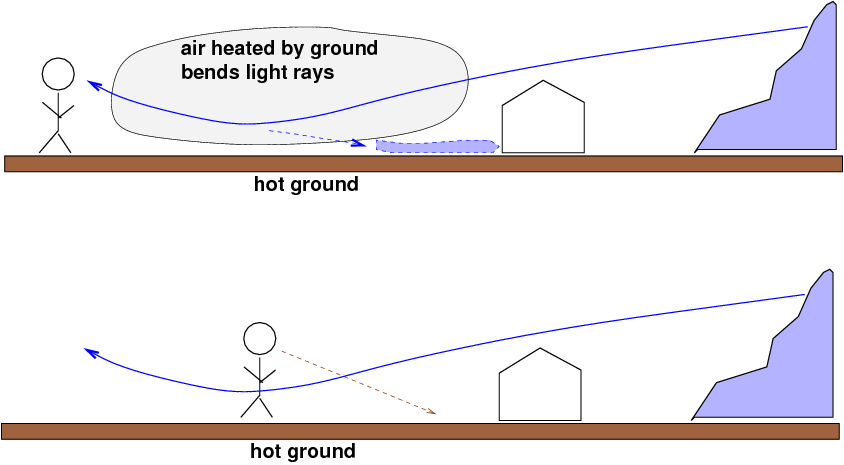
| MadSci Network: Physics |
What is a mirage? In basic terms, it's a phenomenon in which light rays from ordinary objects are modified by the atmosphere in some way so that a distant observer sees a heavily modified version of the original objects; the modifications are so strong that the observer doesn't recognize the true form of the objects.
For example, one common mirage involves looking over a long stretch of hot landscape, such as a long, straight road on a summer's day. You can see an example of this type of mirage in the picture I've attached to this explanation (a larger version of the picture can be found at Wikipedia's entry on mirages).

It appears that the tent is floating in a big pool of water -- but of course, that's just a mirage. The tent is really sitting on the sandy desert floor. Light rays from the blueish hills in the far distance are being bent by the hot air between the observer and the tent so that they appear to be coming from the the direction of the ground. The observer will see a blueish patch of light when he looks down. The patch often seems to waver and ripple because the hot air which is bending the light rises in a turbulent manner due to the hot ground below it.

If the observer walks towards the tent, he'll eventually come close enough to the tent that the light rays from the hills are no longer bent enough to appear to come from below him. In other words, he'll be so close to the actual object (the sandy ground) that the hot air can't bend the light rays from distant objects (the blueish hills) enough to make those light rays fly into his eyes when he looks straight at the direction of the actua object (the sandy ground). At this point, the observer will see a dry, brownish patch of sandy ground when he looks down, and the mirage will disappear.
In general, when one approaches a mirage, it disappears because light rays from some distant source cannot bend enough to enter one's eyes when one looks at a nearby object.
Try the links in the MadSci Library for more information on Physics.